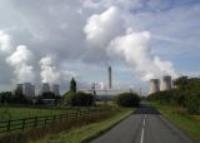 Add My Company
Add My Company
Sign In

There has been plenty of media attention paid to biomass energy production over recent years, thanks to the unveiling of several new biomass power stations across the country. As well as these all-new developments, some power stations that have been in operation for almost 50 years have been given a new lease of life by converting from coal to biomass. These include Drax in North Yorkshire, which generates more energy than any other power station in the country.
What is biomass?
The name sounds new, but creating energy from biomass is a process that goes back to the dawn of time. Biomass is organic material that comes from plants or animals – so the first cavemen to harness fire and use it to burn wood were actually undertaking biomass energy production.
The same can be said for the pellets or wood that you might use in the log burner to keep your living room cosy on a winter’s evening. But of course, when it comes to power generation, the concept is taken to a whole new level.
An obvious choice for renewable energy
Mention renewable energy and you tend to think of solar, wind and wave power. However, when the process is managed properly, biomass energy production can be carbon neutral too. Biomass power stations typically use wood and wood residues, most commonly spruce, willow, birch or eucalyptus. The feedstock goes through a dewatering process that reduces the moisture content and increases thermal efficiency when it is burned.
Intuitively, chopping down trees to burn them for energy production does not sound like a cutting edge, environmentally friendly practice. However, looks can be deceptive. Research carried out in the scientific community has shown that forests thrive better when there is regular coppicing. The increased use of biomass has therefore actually led to better and more sustainable forestry practices.
Looking beyond the trees
Wood pellets are just one form of biomass, though. Biofuels can also be extracted from vegetable oil and animal fat using disc stack separators and tricanters to first separate out the solid from the liquid and then to further extract different components according to their density. This type of biofuel is used in both energy production and for the biodiesel you might already be using in your car or van without even knowing it.
Furthermore, the latest power plants are offering up even more exciting possibilities from a sustainability perspective. Energy from Waste plants use “black bin” rubbish and after dewatering and processing, put it through a process called fluidised bed gasification. This converts the waste into gas, which then powers a turbine to generate electricity.
One high-profile example is the £200 million Energy Works in Hull. The project has been dogged by delays along with some health and safety problems during construction, but is finally nearing completion. The new power plant will get through an incredible 250,000 tonnes of household waste every year, and the fuel will be “locally sourced.” Incredibly, Hull currently exports hundreds of thousands of tonnes of this kind of waste to Northern Europe, where it is used in similar plants.
The fact that at least some of this transportation will no longer be needed will mean that the plant could arguably be defined as carbon positive. That’s an incredible achievement in the power industry and an indication of the scale of change that this sector is currently going through.
For more information on Brave new world or a return to the old days? A look at biomass energy production talk to Euroby Limited
Enquire Now
List your company on FindTheNeedle.

